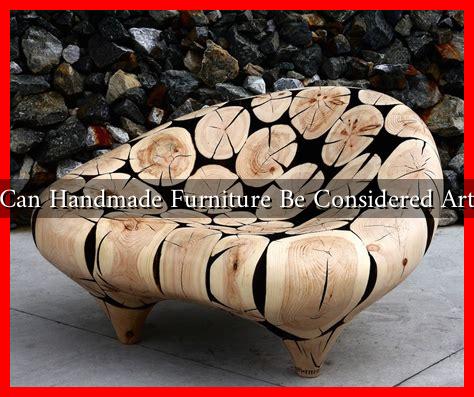-
Table of Contents
Can Handmade Furniture Be Considered Art?
The debate over whether handmade furniture can be classified as art has gained traction in recent years. As the lines between functionality and aesthetics blur, many artisans and designers are challenging traditional notions of what constitutes art. This article explores the intersection of craftsmanship and artistry in handmade furniture, examining its cultural significance, emotional impact, and the evolving definitions of art.
The Definition of Art
To understand whether handmade furniture can be considered art, we must first define what art is. Traditionally, art is viewed as a form of expression that evokes emotion, provokes thought, or conveys a message. The following characteristics are often associated with art:
- Creativity: Art is born from the imagination and creativity of the artist.
- Emotional Impact: Art often elicits an emotional response from its audience.
- Intention: The creator typically has a specific intention or message behind their work.
- Originality: Art is often unique and reflects the individual style of the artist.
When we apply these criteria to handmade furniture, it becomes evident that many pieces can indeed be classified as art. Artisans often pour their creativity and emotions into their work, resulting in unique pieces that tell a story or convey a message.
The Craftsmanship Behind Handmade Furniture
Handmade furniture is characterized by its meticulous craftsmanship and attention to detail. Unlike mass-produced items, handmade pieces are often created using traditional techniques and high-quality materials. This craftsmanship can elevate furniture to an art form in several ways:
- Skill and Technique: Artisans often spend years honing their skills, mastering techniques that have been passed down through generations.
- Material Selection: The choice of materials can significantly impact the aesthetic and emotional quality of the piece.
- Design and Functionality: Many artisans create pieces that are not only functional but also visually striking, merging form and function.
For example, the work of renowned furniture designer George Nakashima exemplifies the artistry in handmade furniture. His pieces, which often incorporate natural wood grains and organic shapes, are celebrated for their beauty and craftsmanship, blurring the lines between furniture and sculpture.
Case Studies: Handmade Furniture as Art
Several contemporary artisans and designers have successfully positioned their handmade furniture as art. Here are a few notable examples:
- Tom Dixon: Known for his innovative designs, Dixon creates furniture that challenges conventional aesthetics. His use of materials like metal and glass transforms functional items into striking art pieces.
- Jasper Morrison: Morrison’s minimalist approach emphasizes simplicity and functionality, yet his designs evoke a sense of beauty that resonates with art enthusiasts.
- Studio Drift: This design studio merges technology and craftsmanship, creating pieces that explore the relationship between nature and design, often resulting in furniture that feels more like art installations.
These examples illustrate how handmade furniture can transcend its utilitarian purpose, becoming a medium for artistic expression.
The Emotional Connection
One of the most compelling arguments for considering handmade furniture as art is the emotional connection it fosters. Unlike mass-produced items, handmade pieces often carry a story or a personal touch that resonates with their owners. This emotional connection can manifest in several ways:
- Personalization: Handmade furniture can be customized to reflect the owner’s personality and style.
- Heritage: Many handmade pieces carry cultural significance, connecting individuals to their heritage.
- Storytelling: Each piece often has a story behind its creation, adding depth and meaning.
According to a survey conducted by the American Craft Council, 78% of respondents believe that handmade items have more emotional value than mass-produced goods. This statistic underscores the importance of emotional connection in the perception of handmade furniture as art.
Conclusion
In conclusion, handmade furniture can undoubtedly be considered art. The combination of craftsmanship, creativity, emotional impact, and cultural significance elevates these pieces beyond mere functionality. As society continues to embrace artisanal work and the value of individuality, the recognition of handmade furniture as art will likely grow. By appreciating these unique creations, we not only support artisans but also celebrate the rich tapestry of human creativity.
For more insights into the world of handmade furniture and its artistic value, visit the American Craft Council.

